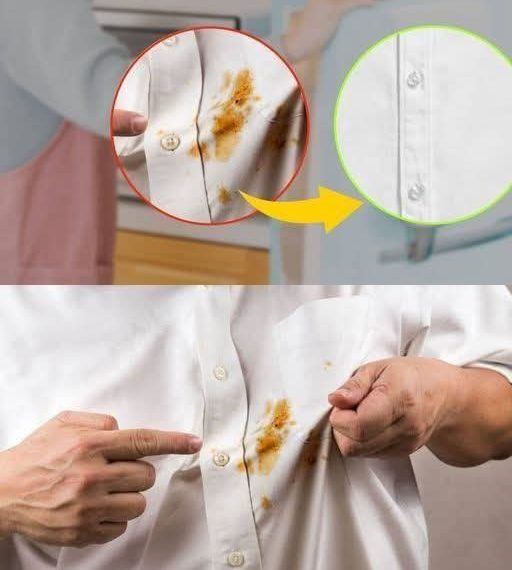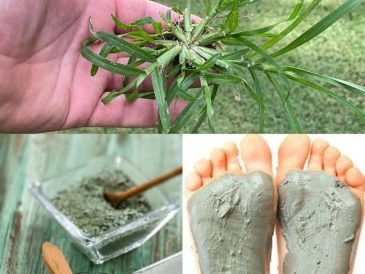We’ve all been there: you’re enjoying a delicious meal, savoring every bite, when suddenly – disaster strikes. A splatter of tomato sauce, curry, or greasy gravy lands on your favorite shirt or blouse. Before you know it, you’re left staring at an unsightly stain, helpless and frustrated. While sauce stains can seem like a nightmare, don’t worry! The solution is simpler than you might think. All you need is an ingredient that’s probably already sitting in your fridge: milk.
In this article, we’ll dive deep into how milk can help you get rid of those pesky sauce stains on your clothes in no time. We’ll explore how this common household ingredient works, the science behind its stain-fighting properties, and why it’s a must-try hack for anyone who wants to save their clothes from permanent damage. Along the way, we’ll also offer some additional tips, tricks, and cleaning methods to ensure you’re prepared for any future stains that come your way.
The Problem with Sauce Stains
Sauce stains are one of the most common types of stains people encounter, and they can be difficult to remove because of the ingredients involved. Tomato-based sauces, gravies, or creamy dressings often contain oils, fats, acids, and pigments, all of which can bond with the fabric and make the stain stubborn. Depending on the type of sauce and the fabric of your clothing, you might find yourself scrubbing away in frustration, but without much success. In some cases, the stain can become set if not treated immediately, which can lead to permanent discoloration or damage.
This is why timely action is essential. The longer a stain sits, the harder it becomes to remove. If you’re caught without a stain remover, don’t fret—milk, which you likely already have in your fridge, is a great option to tackle the problem.
Why Does Milk Work on Sauce Stains?
Milk may not be your first thought when it comes to removing stains, but it has several properties that make it effective against a wide range of common stains, including those from sauces. Here’s a breakdown of how milk works:
1. Proteins in Milk
Milk is rich in proteins, particularly casein, which has been shown to be effective in lifting and breaking down grease and fat. These proteins are attracted to the fat molecules in the sauce stain, helping to loosen and lift the stain from the fabric fibers. When milk is applied to a sauce stain, it acts as a natural solvent, dissolving the oils and pigments that make up the stain.
2. Mild Acidity
Milk is slightly acidic, which helps it break down the components of certain types of stains. For example, it can help neutralize the acidity in tomato-based sauces like marinara or ketchup. The mild acidity of milk won’t damage most fabrics, making it a safe and gentle option for stain removal.
3. Fat Content
The fat content in milk also helps with lifting greasy stains. Fat acts as a natural emulsifier, helping to break down oils and grease that are often found in sauces. Grease-based stains, such as those from curry, cheese sauces, or gravies, are notoriously hard to remove, but milk’s fat content makes it a powerful tool for cleaning them up.
4. Moisture and Hydration
Milk’s moisture content helps to soften and loosen the stain from fabric fibers. It prevents the stain from setting into the material, which is critical for getting the stain out effectively. When you soak the stained area in milk, it allows for a gentler approach to stain removal, without the need for harsh chemicals or scrubbing that can damage delicate fabrics.
How to Use Milk to Remove Sauce Stains
Now that we know why milk is so effective at removing sauce stains, let’s dive into the step-by-step process for using it to save your favorite garments. The good news is that it’s incredibly simple!
Step 1: Act Quickly
The key to successfully removing a sauce stain is addressing it as soon as possible. The longer the stain sits, the more difficult it will be to remove. If the sauce is still wet, gently blot the area with a paper towel or cloth to absorb any excess liquid. Do not rub the stain, as this can push it deeper into the fibers. If the stain has already dried, don’t worry—milk can still help, but the sooner you treat it, the better the results.
Step 2: Heat the Milk
While you don’t need to boil the milk, you’ll want to warm it up a bit before applying it to the stain. This helps to activate the milk’s fat content and makes it more effective at breaking down the oils in the stain. Pour the milk into a small saucepan or microwave-safe bowl, and heat it up for about 30 seconds to 1 minute. Be sure not to overheat it, as it should be warm, not scalding hot.
Step 3: Apply Milk to the Stain
Once the milk is warm, pour it directly over the sauce stain on the fabric. Make sure the stained area is completely covered with milk. If the stain is large, you may need to soak it in a bowl or basin of milk to ensure that the entire stain is submerged.
Step 4: Let the Milk Soak In
Leave the garment to soak in the milk for 30 minutes to an hour. This will give the proteins, fats, and mild acidity in the milk time to break down the stain and lift it from the fabric. The longer the fabric soaks, the better the results—so feel free to leave it for up to an hour, especially if the stain is old or particularly stubborn.
Step 5: Gently Scrub the Stain
After soaking, gently rub the stained area with your fingers or a soft cloth. This will help further loosen any remaining bits of sauce from the fabric fibers. Avoid using anything abrasive, as this can damage the fabric. For particularly tough stains, you can use a soft toothbrush to gently scrub the area.
Step 6: Rinse and Wash
After the stain has been treated, rinse the garment thoroughly with cool water to remove any remaining milk. Then, wash the garment as usual according to its care label instructions. If you have a washing machine, simply throw it in with the rest of your laundry. If the stain persists, you can repeat the process until it’s gone.
Step 7: Dry and Inspect
Once the stain is removed, hang the garment to air dry or tumble dry as directed. Before putting it in the dryer, check to ensure the stain is completely gone. If any remnants remain, it’s better to rewash the garment rather than drying it, as heat can set the stain permanently.
Additional Tips for Removing Sauce Stains
While milk is an excellent option for many sauce stains, there are a few additional tips and tricks to keep in mind for tackling tough stains:
1. Use Dish Soap for Greasy Stains
If the sauce contains a high amount of grease (like curry or creamy dressings), try adding a small amount of dish soap to the stain before applying the milk. Dish soap is designed to break down grease and works well in tandem with milk to lift oily stains.
2. Test Fabric Sensitivity
Before applying milk to a garment, test it in an inconspicuous area to ensure it won’t cause any damage to the fabric. While milk is gentle on most fabrics, it’s always best to test first on delicate fabrics like silk or wool.
3. Avoid Hot Water
When washing a stained garment, avoid using hot water until the stain has been completely removed. Hot water can sometimes set stains, making them much harder to get rid of.
4. Try Vinegar for Tomato-Based Stains
Tomato-based sauces, such as marinara or ketchup, can sometimes be tricky to remove. For these types of stains, try adding a little white vinegar to the milk mixture. The vinegar helps neutralize the acidity in the tomato, making it easier to remove the stain.
5. Use Baking Soda for Tough Stains
For extra stubborn stains, you can create a paste by mixing milk with baking soda. Apply the paste to the stained area, leave it to sit for 15-20 minutes, and then rinse and wash as usual. Baking soda acts as a mild abrasive and can help lift stains that have set into the fabric.
Conclusion
Sauce stains on clothes are an inevitable part of life, but that doesn’t mean they need to ruin your favorite garments. With the simple, effective trick of using milk, you can easily remove stubborn sauce stains without resorting to harsh chemicals or expensive cleaners. Whether you’re dealing with a fresh splatter or an older, set-in stain, milk can help break down oils, pigments, and grease, leaving your clothes looking as good as new.
So, next time you’re faced with a sauce stain, head to the fridge, grab the milk, and follow these easy steps. With just a little time and a few simple ingredients, you can save your clothes and keep enjoying your meals without fear of those pesky stains.





